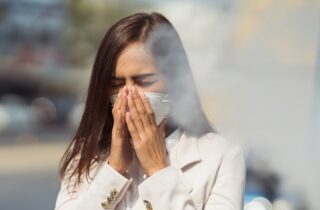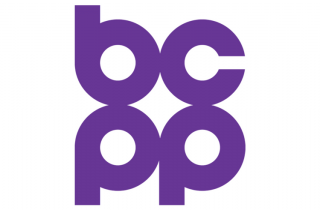CA Safer Food Packaging Act of 2025 (AB 1148)
At a Glance
BCPP is co-sponsoring the California Safer Food Packaging Act of 2025 (AB 1148 – Sharp-Collins) to ban three chemicals and groups of hazardous chemicals in packaging materials that contact food or beverage. The chemicals that would be banned are Bisphenols, Ortho-Phthalates, and Antimony Trioxide.
This law would expand upon another BCPP co-sponsored bill, the California Safer Food Packaging & Cookware Act (AB 1200 – Ting), which became law in 2021 and bans PFAS chemicals from paper-based food packaging, requires cookware manufacturers to disclose the presence of hazardous chemicals and prohibits misleading advertising on cookware packaging.
Status: The bill has passed the Assembly Committee on Environmental Safety and Toxic Materials and will now go to the Assembly Judiciary Committee.
Overview
The California Safer Food Packaging Act of 2025 (AB 1148), authored by Assemblymember Dr LaShae Sharp-Collins, prohibits companies from distributing, or selling in California any food or beverage packaging that contains the following intentionally added harmful chemicals:
- The class of Bisphenols except tetramethyl bisphenol F (TMBPF);
- The entire class of Ortho-phthalates
- Antimony trioxide
These chemicals have been found in food and beverage packaged in materials like cans, foil, pouches, and other packaging types, and include milk and dairy products, meat and seafood, prepared meals, fruits and vegetables, baby food, and fast food.
Bisphenols are a group of chemicals that are linked to a wide variety of health harms, including hormone disruption, reproductive problems in women and men, breast cancer, metabolic problems including obesity and diabetes, immune system inflammation linked to asthma, cardiovascular disease, behavioral effects, and reduced learning and memory. [1] New scientific analysis has shown that BPA can have harmful effects at levels much lower than previously thought, and other bisphenols also show endocrine disrupting effects. Residents in the US are likely exposed to a level that is 1000 higher than what the European Food Safety Authority deems safe, which banned BPA in December 2024 and other harmful bisphenols in food packaging materials.
Ortho-phthalates are hormone-disrupting chemicals that have been linked to breast cancer, developmental issues such as attention deficit disorder, decreased fertility, obesity, and asthma.
Testing by Consumer Reports in early 2024 found bisphenols and phthalates in almost every food they tested, often at high levels.[2] Bisphenols and phthalates have been found in a variety of food products including cooking oils and have also been found in PET plastics, which are commonly used for beverage bottles and other food containers.[3]
Antimony Trioxide is listed as a Proposition 65 chemical (carcinogen) by the California Office of Environmental Health Hazard Assessment and is considered to be a cancer-causing chemical by the US Federal Department of Health and Human Services and the International Agency for Research on Cancer (IARC). It is used as a catalyst in the production of PET plastic, and Antimony has been found in the beverage contents of PET plastic bottles. Antimony tested in some beverage brands by Defend Our Health exceeded the California drinking water public health goal.[4]
The California Safer Food Packaging Act of 2025 would expand upon another BCPP co-sponsored bill, the California Safer Food Packaging & Cookware Act (AB 1200—Ting), which became law in 2021. That law banned PFAS chemicals from paper-based food packaging, required cookware manufacturers to disclose the presence of hazardous chemicals, and prohibited misleading advertising on cookware packaging.
The Safer Food Packaging Act of 2025 bill bans intentionally added bisphenols, ortho-phthalates, and Antimony Trioxide from packages, packaging components, or food service ware for containing, serving, storing, handling, protecting, or marketing food, foodstuffs, or beverages. It includes food or beverage containers, take-out food containers, unit product boxes, liners, wrappers, serving vessels, eating utensils, straws, food boxes, and disposable plates, bowls, or trays.
The bill would ban these three chemical groups from food and beverage packaging by January 2027, at or above a limit level set in regulations by the Department of Toxic Substances Control.
The Department of Toxic Substances Control can also set standards that are more protective of public health, sensitive populations, or the environment for antimony, bisphenols, and ortho-phthalates.
The bill can be enforced by the California Attorney General or local district attorneys, should these chemicals be found in food packaging.
BCPP is co-sponsoring this legislation with the Environmental Working Group and CalPIRG.
Contact
Nancy Buermeyer, Breast Cancer Prevention Partners Director of Program & Policy
Co-Sponsoring Organizations:
Californians Against Waste
Environmental Working Group EWG
Supporting Organizations:
Active San Gabriel Valley
Alliance of Nurses for Healthy Environments
American College of OB/GYN’s District IX
Black Women for Wellness Action Project
Breast Cancer Over Time
California Black Health Network
California Nurses for Environmental Health and Justice
Center for Environmental Health
Clean Water Action
ClientEarth4Kids
Climate Action California
Consumer Reports
Defend Our Health
FACTS Families Advocating for Chemical and Toxics Safety
Friends of the Earth
Green Science Policy Institute
Just Transition Alliance
Latino Coalition for a Healthy California
National Stewardship Action Council
Natural Resources Defense Council
Non-Toxic Neighborhoods
Physicians for Social Responsibility San Francisco Bay
Salinas Valley Solid Waste Authority
San Francisco Baykeeper
Save the Bay
Sierra Club California
The Last Beach Cleanup
7th Generation Advisors
Footnotes
[1] Vom Saal FS, Vandenberg LN. Update on the Health Effects of Bisphenol A: Overwhelming Evidence of Harm. Endocrinology. 2021 Mar 1;162(3):bqaa171. Doi: 10.1210/endocr/bqaa171. PMID: 33516155; PMCID: PMC7846099. https://pmc.ncbi.nlm.nih.gov/articles/PMC7846099/
[2] https://www.consumerreports.org/health/food-contaminants/the-plastic-chemicals-hiding-in-your-food-a7358224781/
[3] Analysis of ortho-phthalates and other plasticizers in select organic and conventional foods in the United States, Krithivasan et al., Journal of Exposure Science & Environmental Epidemiology (2023) 33:778–786; https://doi.org/10.1038/s41370-023-00596-0
[4] PROBLEM PLASTIC: How Polyester and PET Plastic Can be Unsafe, Unjust, and Unsustainable Materials, Defend Our Health, 2022 https://defendourhealth.org/wp-content/uploads/2022/07/PET-Report-Part1-070622d-1.pdf
The concentrations measured were above 1 part per billion (ppb), which is the California Public Health Goal for antimony in drinking water. Exposures above this level are a concern for liver disease, and increased risk of cancer, cardiovascular disease and damage to other organs, and Defend Our Health recommends a protective health limit of 0.25 ppb, which recognizes other concurrent sources of antimony exposure exist.
Types: Article, Fact Sheet




